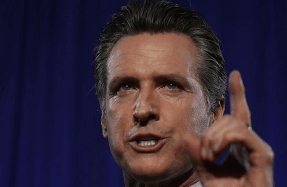West Side Storm

New York’s Upper West Side is one of the safest, wealthiest, and most stable neighborhoods in the city—but it’s not a gated community, and the challenges and problems of the broader metropolis seep in. Because of its street density, engaged and hyperlocal media, and politically active citizenry, this neighborhood of nearly 200,000 people amplifies what’s going on in the rest of New York—and right now, that amplification is a deafening alarm.
Last week, the Upper West Side suffered two random attacks in the space of 24 hours. First, last Wednesday night, a man doing his part to support the pandemic-era economy and urban street life—eating dinner outside with his wife at 75th Street and Columbus—was punched by a stranger. Then, Thursday afternoon, a woman exiting the 72nd Street subway station was stabbed, also by a stranger. In neither incident did a dispute trigger the attack. Both victims escaped serious injury.
The two assaults are not anecdotes. Crime, even in the safest city precincts, is unmistakably rising. Across the West Side’s two police precincts in 2019, 227 people suffered a felony assault—fewer than one per day. This year, assaults in the area are down only 13 percent, and robberies are flat—an astonishing increase, in effect, given relative to sparse foot traffic. In June, the tonnage of residential garbage collected on the Upper West Side was down nearly 12 percent compared with the previous year, according to Department of Sanitation data. Until mid-May, people were not even supposed to leave their homes except for essential purposes, leaving far fewer potential crime victims out and about. Just like on subways, then, the per-capita risk is up. Murders, too, are increasing, overall: from one, at this point last year, to eight this year.
Like much of the rest of the city, the Upper West Side is experiencing a lost equilibrium. Less foot traffic encourages crimes of opportunity, which, in turn, discourage foot traffic. It’s not just felony crimes that dampen normal activity, either. The city has taken over three Upper West Side hotels to house homeless men, many with serious mental illness as well as drug and alcohol addictions. In normal times, the argument that every neighborhood must shoulder its “fair share” of social services makes some sense—as long as the city delivers these social services through well-run supportive-housing facilities, with ample supervision of residents and security on nearby blocks. But warehousing troubled men in lonely hotel rooms, and then leaving them to their own devices all day, is not an optimal strategy.
That’s especially true when normal foot traffic is not sufficient to outweigh dysfunctional vagrancy. On Thursday afternoon, I walked the whole Upper West Side—on Broadway, from 60th Street to 111th Street, and back. This isn’t a healthy corridor right now. Retailers are shuttered or operating on reduced hours; many storefronts were empty even before the pandemic. People still gamely eat out, but they face repeated requests for money from aggressive passersby. I stopped and sat on a bench at the 72nd Street subway station, to check my email, and was accosted by a disturbed man raving about my cellphone. If it hadn’t been for three uniformed cops standing nearby—likely an after-effect of the stabbing in the same location four hours earlier—I would have moved along quickly rather than waving him off. As the New York Post reports, women are subject to catcalls from loitering men in the area.
How to restore an always-fragile equilibrium? A competent city government would realize that it isn’t wise to place thousands of men in hotel rooms until the pandemic ends, as Mayor Bill de Blasio has vowed to do—not just on the Upper West Side, but throughout the city. The city needs a long-term solution for chronic adult-male homelessness, including retrofitting traditional homeless shelters to deliver true social services, with social distancing. An eventual single room or supportive apartment should be a reward for meeting various treatment milestones, not an open-ended starting point. The hotel solution isn’t good for homeless men or their neighbors—only for politically connected hotel owners.
Policing, too, must play a role, with more officers on foot, not in cars. Police officers standing at train stations and walking up and down Broadway are a visible deterrent to crime—and faster responders when crime does occur.
As it happens, police quickly caught the man who punched the outdoor-dining restaurant patron, but the victim decided not to press charges. Police thus brought the suspect—last known address, a Queens homeless shelter—to a hospital as “an involuntary EDP [emotionally disturbed person],” the West Side Rag reports. The hospital should keep him until he is well enough to walk the streets without randomly punching people; if it doesn’t, then the victim, through his magnanimousness, has only done a disservice to his fellow city residents.
The Upper West Side is the nexus of an unfolding social experiment. Will this generation of wealthier New Yorkers—with options to go elsewhere—stay in the city and fight for their quality of life, as a previous generation did? Or will they give up and leave? Some residents with other options have already left. And many others have choices not yet exercised: the local median household income is $118,000, and 31 percent of households in this supposedly scruffy, “authentic” neighborhood make $200,000 annually or more.
Of course, it’s not all up to the well-off. The middle class, working class, and retirees in rent-regulated apartments or co-ops purchased decades ago can stay and fight, too—but they’ll have to do so with a significantly reduced tax base for public services like policing, garbage collection, and services for the mentally ill. For now, the experiment continues.
City Journal is a publication of the Manhattan Institute for Policy Research (MI), a leading free-market think tank. Are you interested in supporting the magazine? As a 501(c)(3) nonprofit, donations in support of MI and City Journal are fully tax-deductible as provided by law (EIN #13-2912529). SUPPORT






